
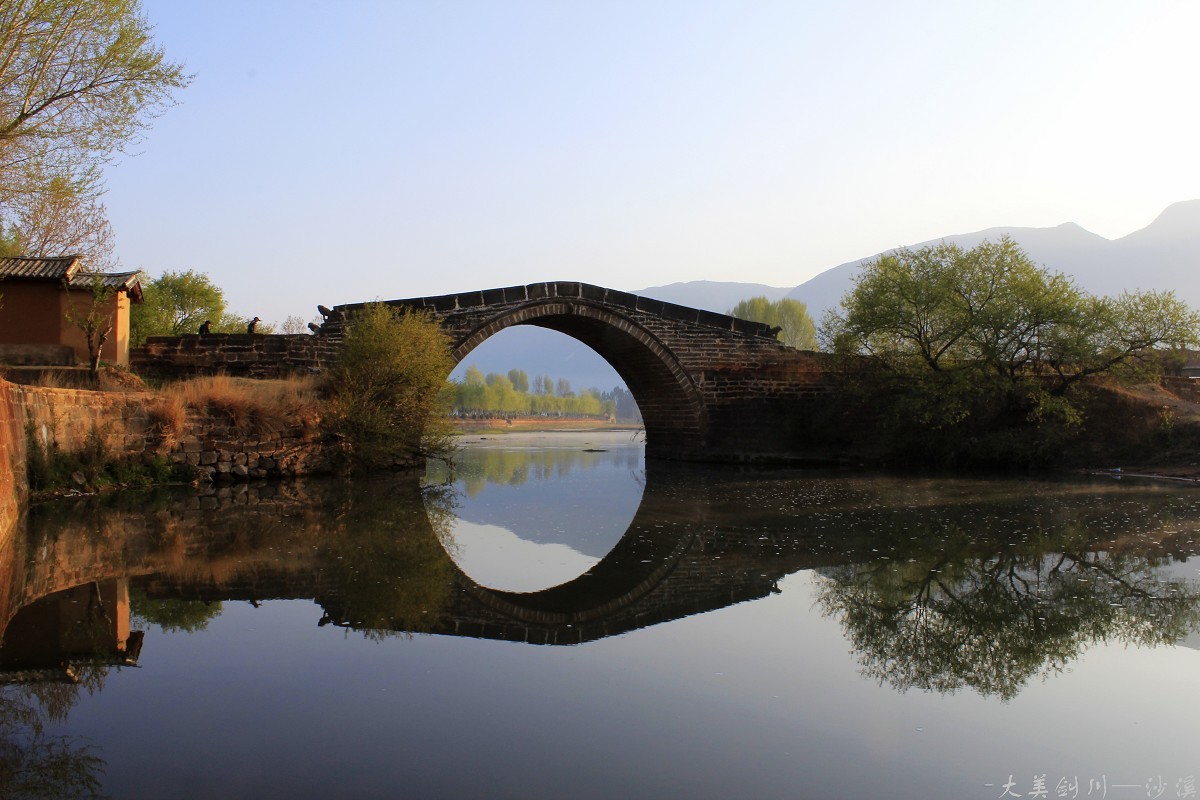
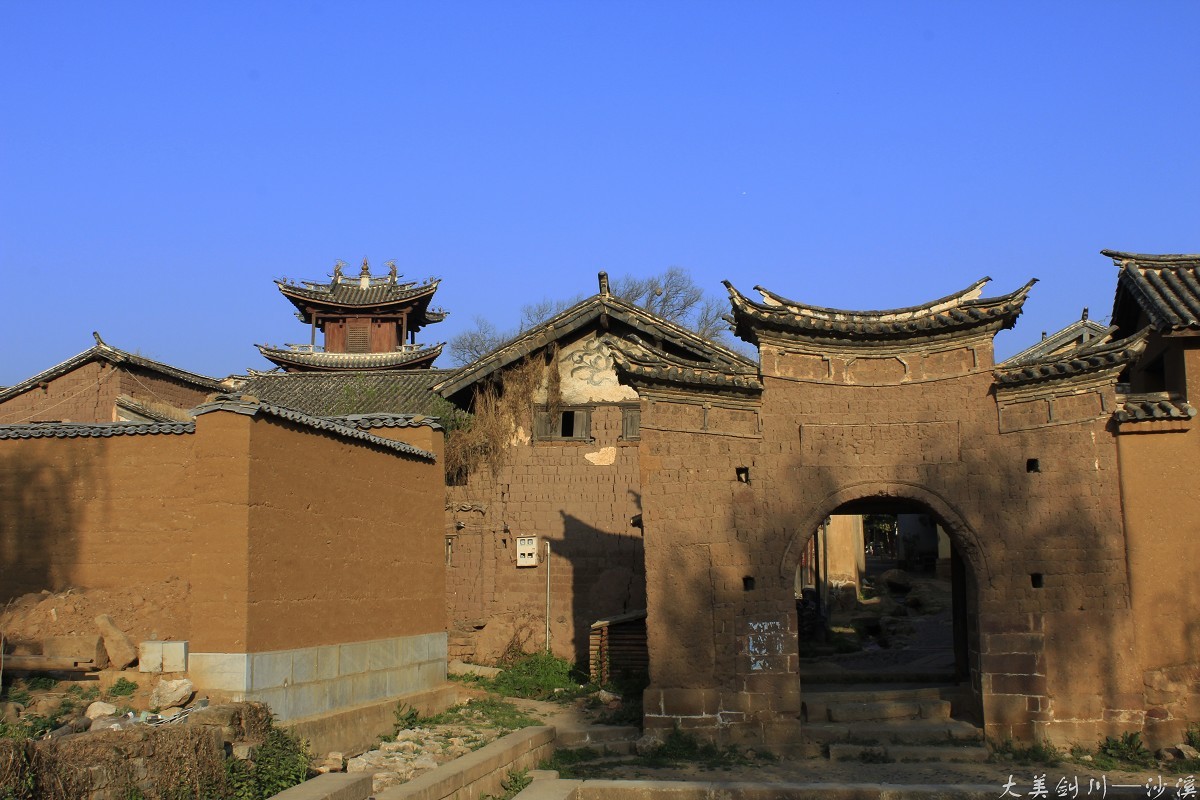
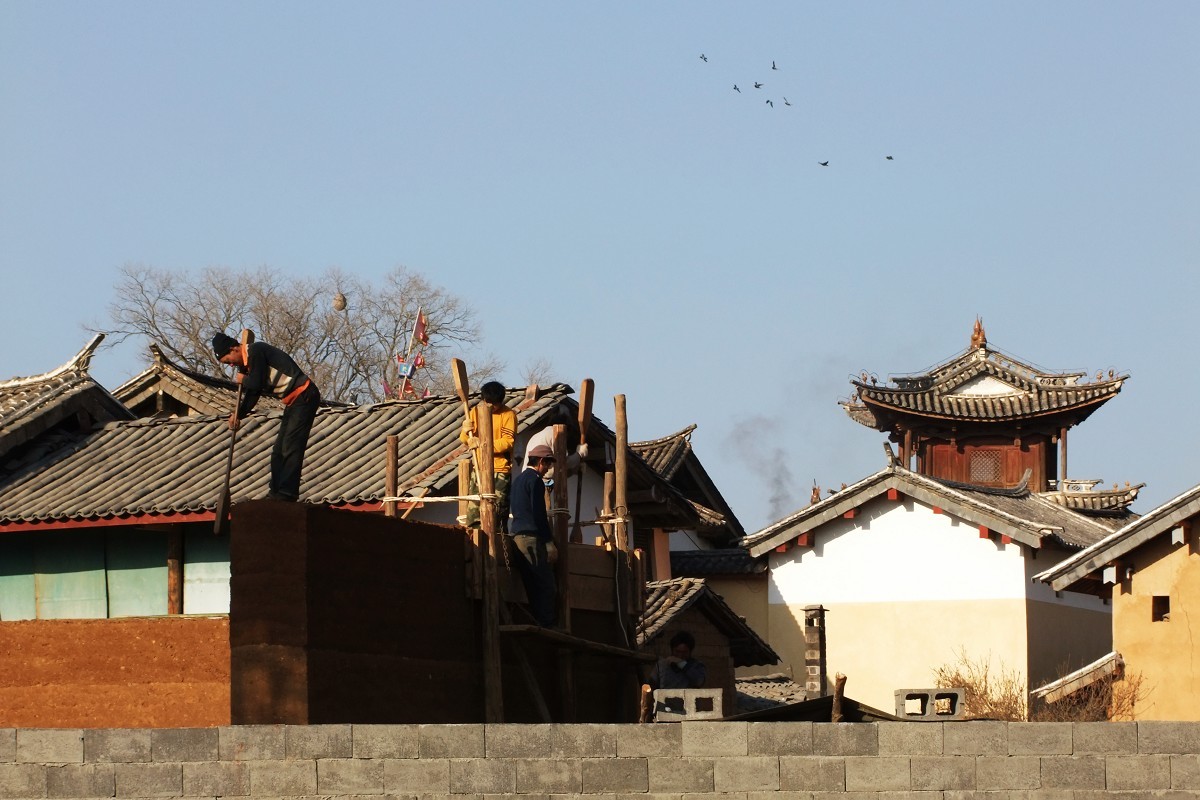
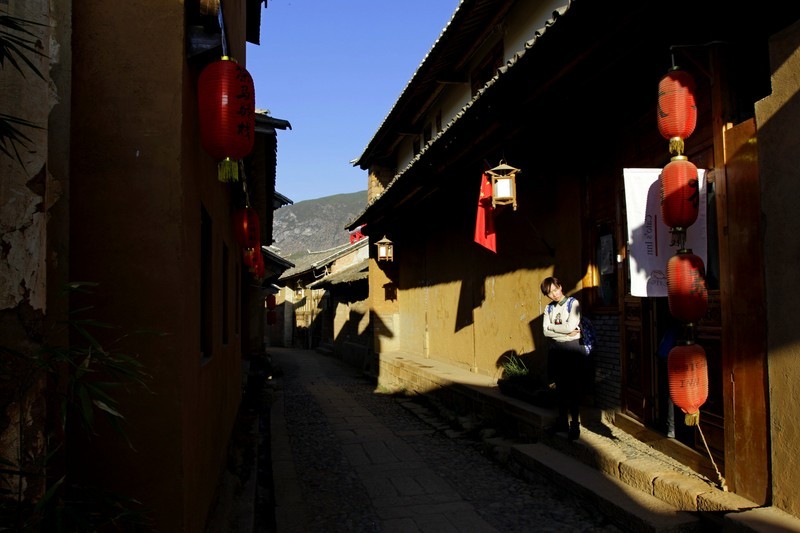
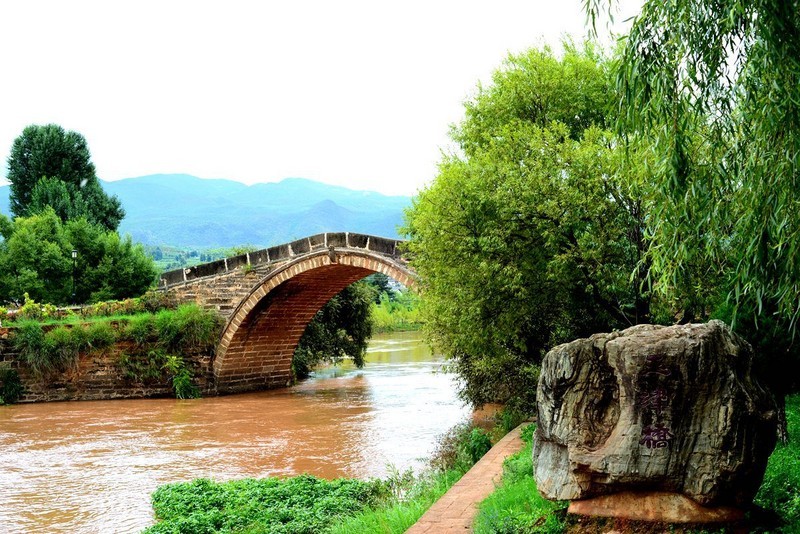
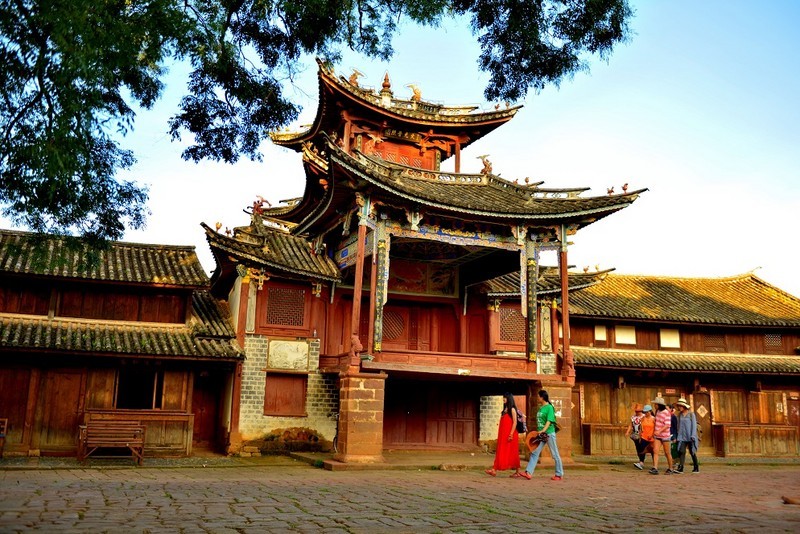
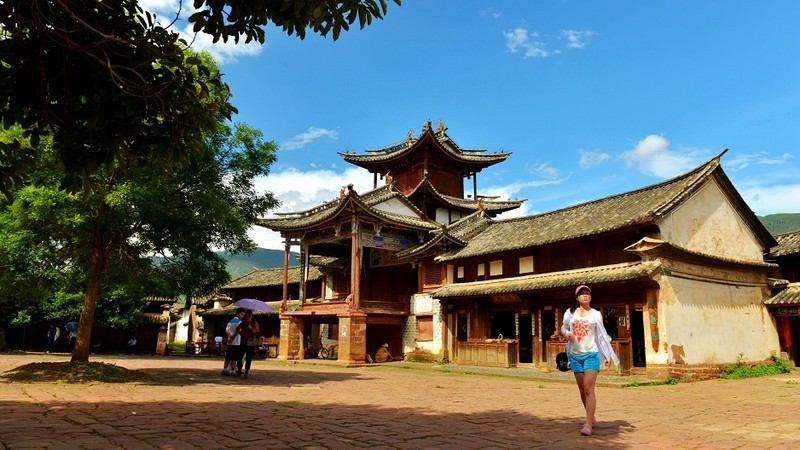
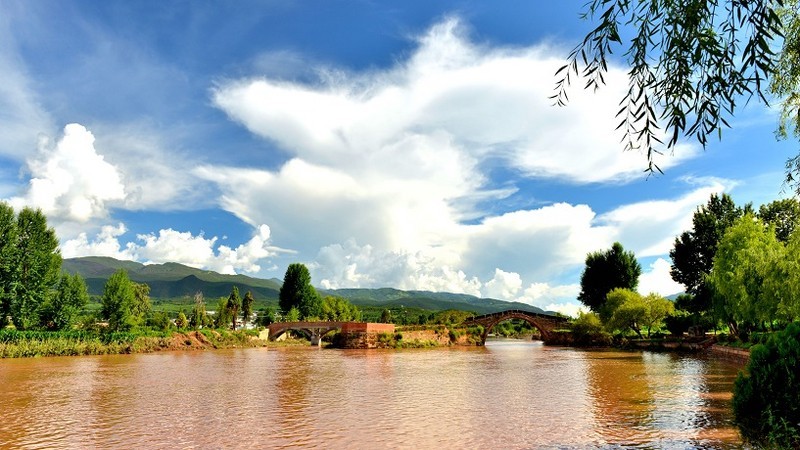
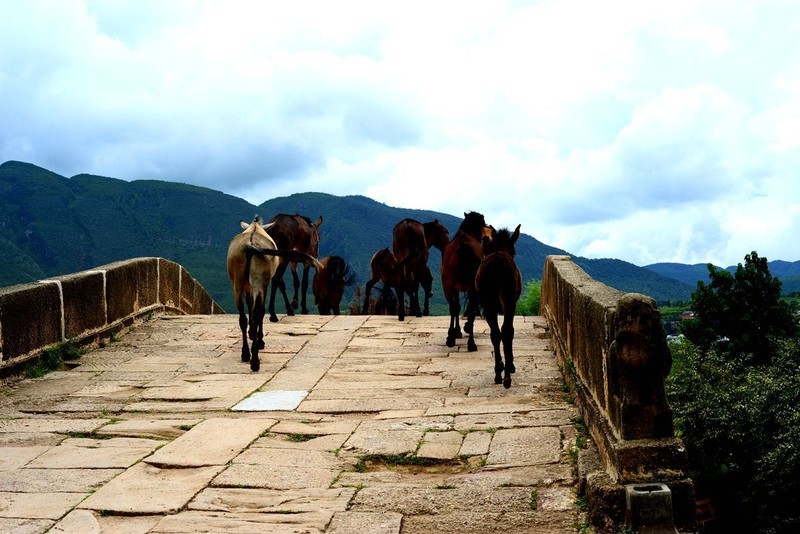
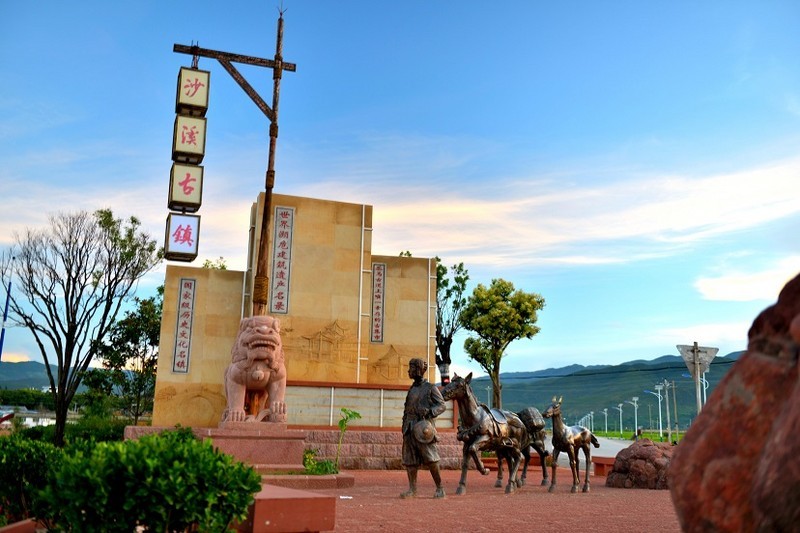
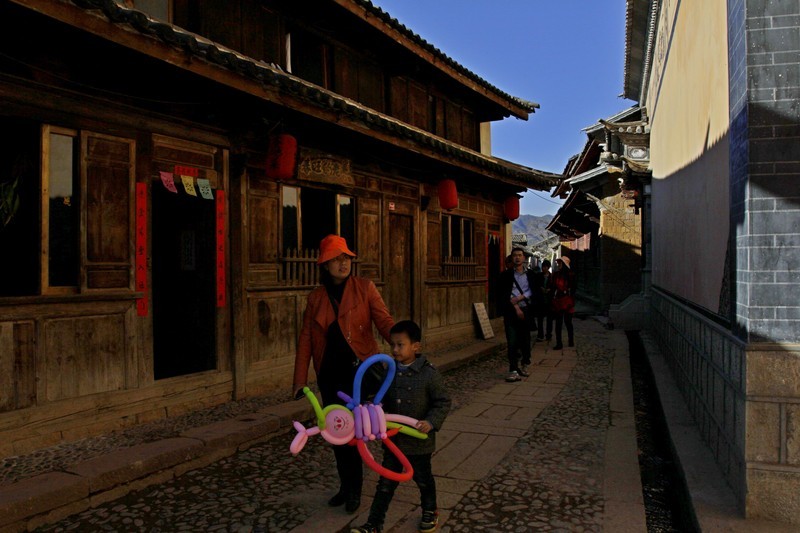
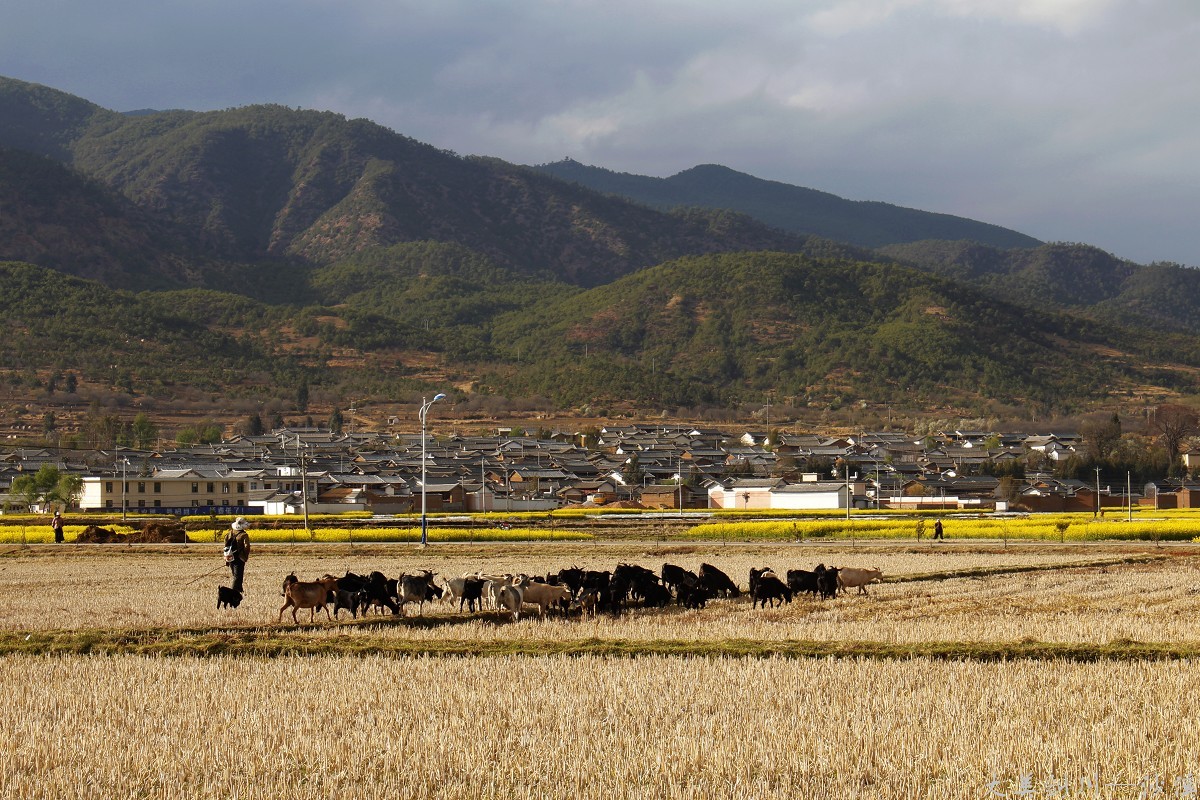
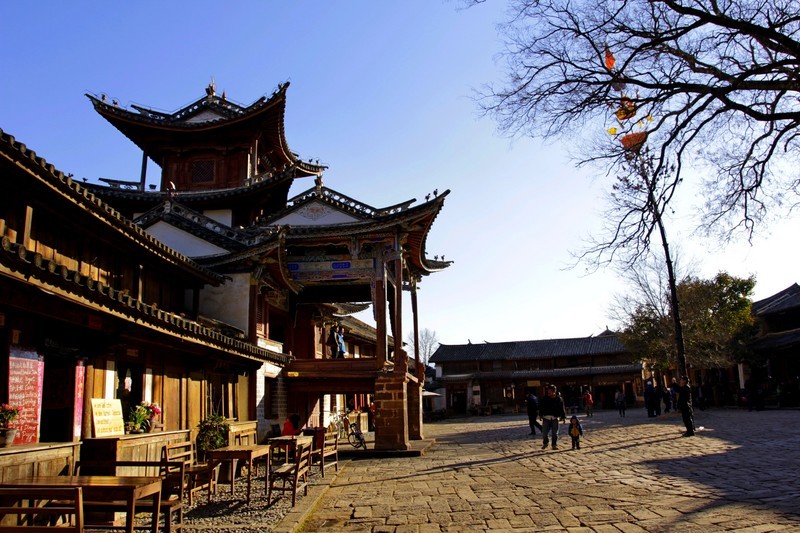
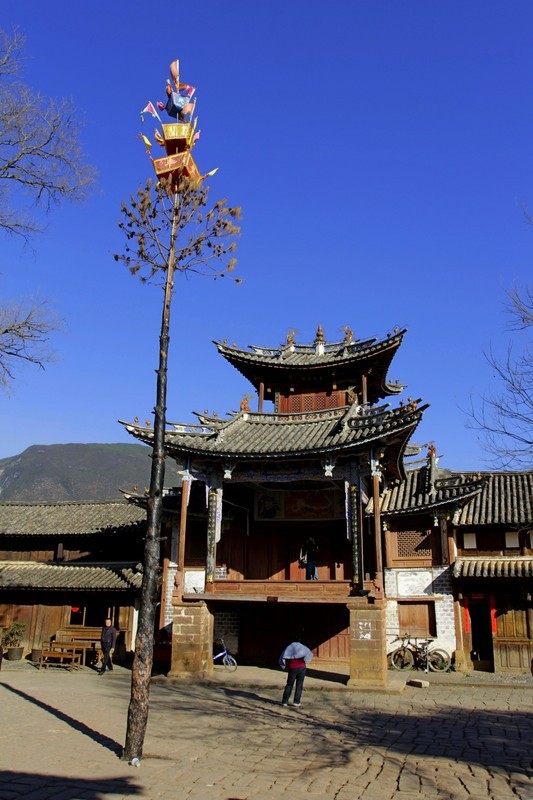
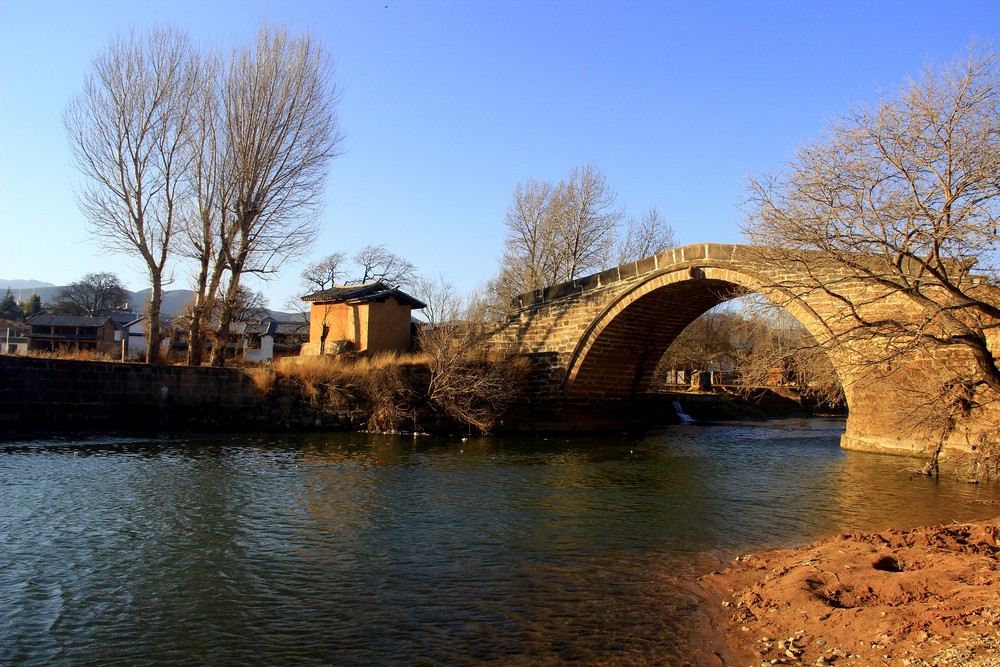
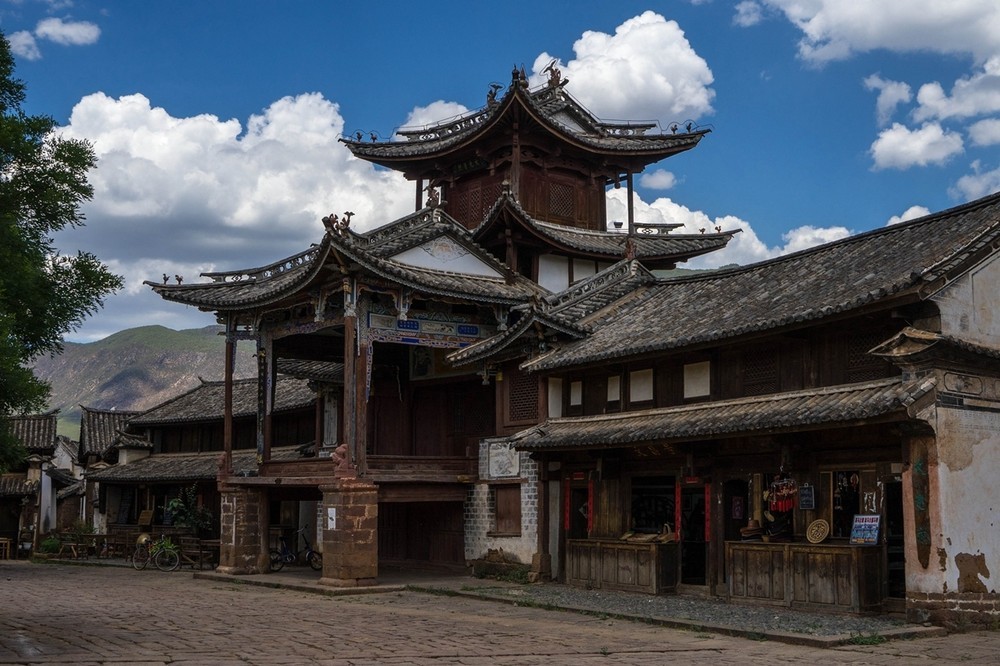
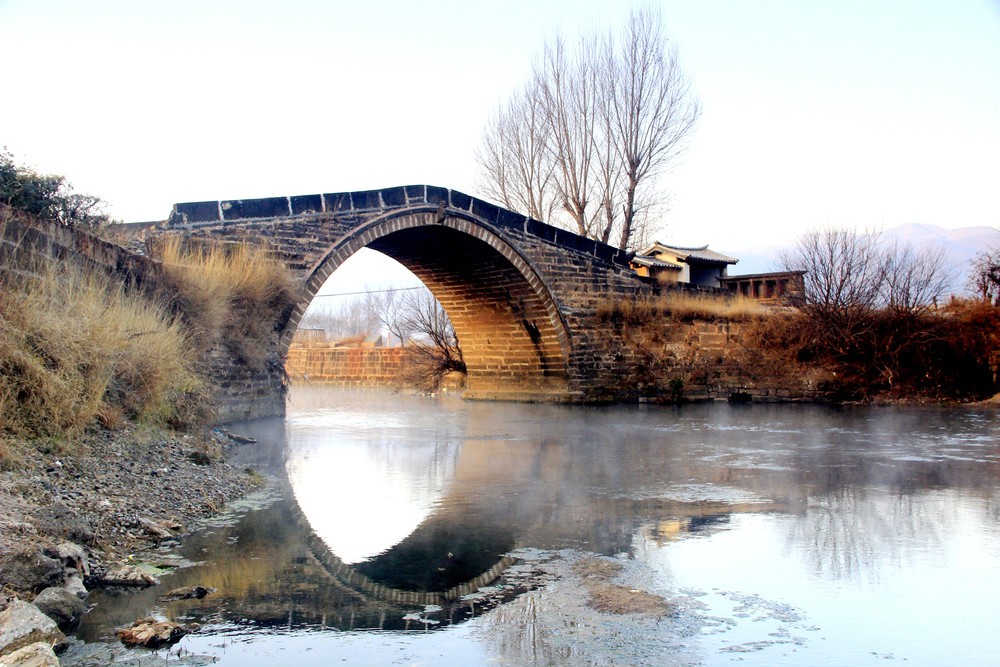
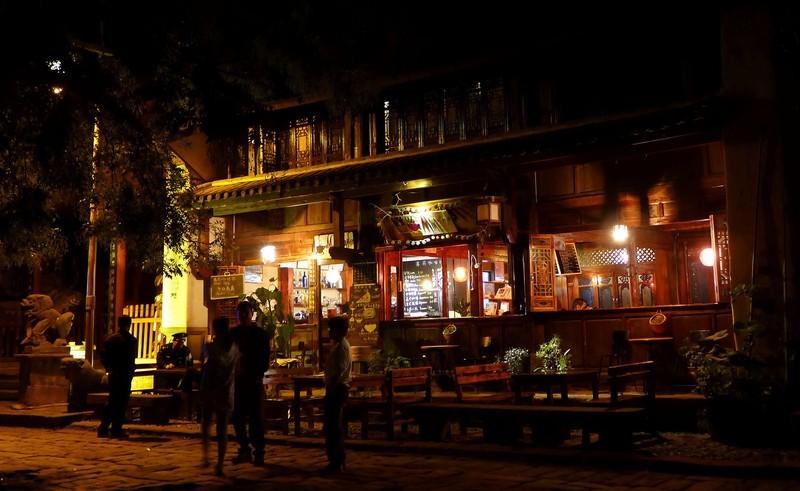
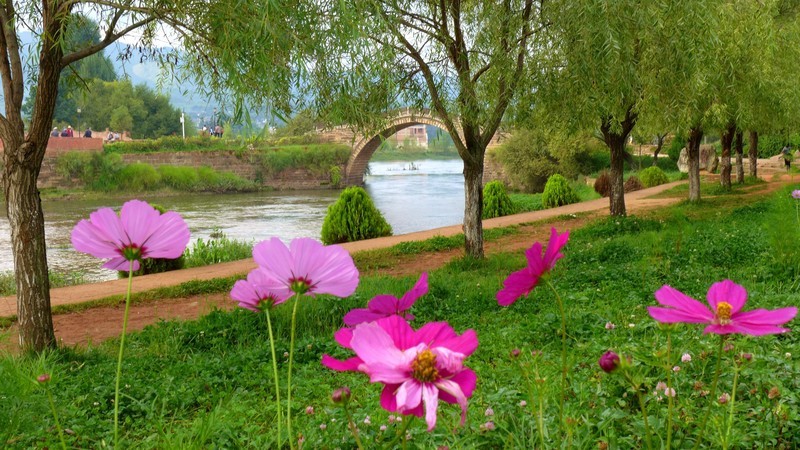
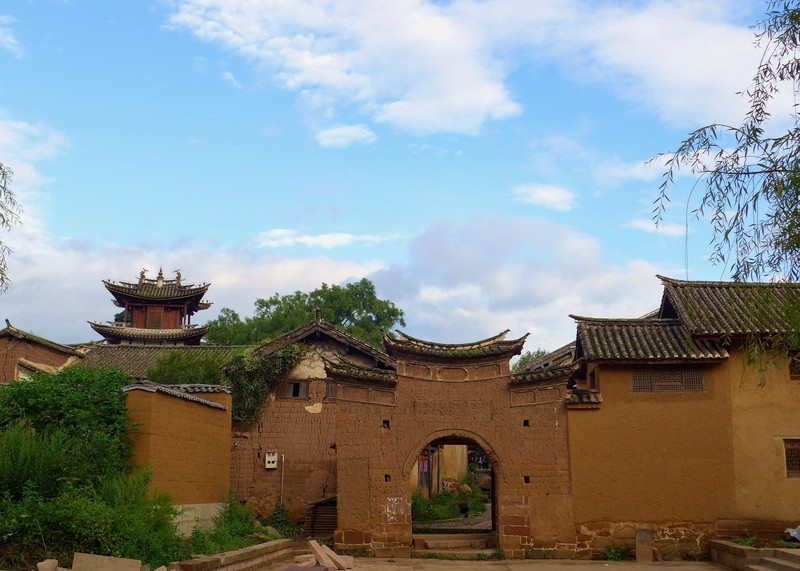
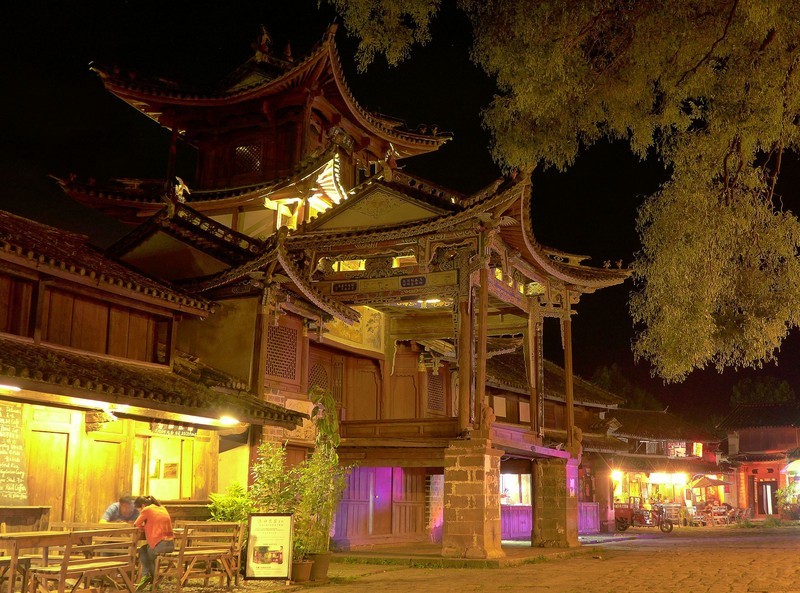
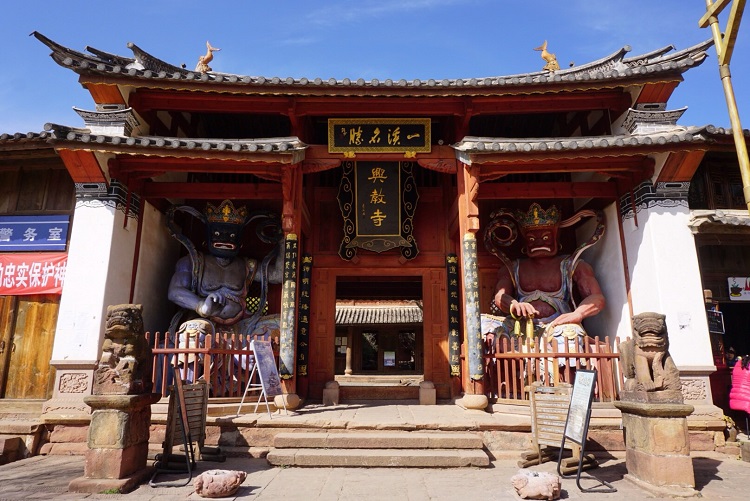
Keywords: The Tea Horse Road Site, Ancient Town, Shaxi Old Town Travel
Location: southwest of Jianchuan County, Dali bai Autonomous Prefecture, southeast of Three Parallel Rivers, between Dali Old Town and Lijiang Old Town
About Shaxi Old Town:
Shaxi is located in a valley in the north of Dali Bai Autonomous Prefecture, about a seven-hour drive from Kunming. Scattered throughout the valley are sixteen Bai minority villages. The population of these villages ranges from a couple hundred to over a thousand in the main village of Sideng.
Shaxi has a long history that dates back to its role as a trade station on the Tea and Horse Caravan Route, also known as the South Silk Road, which centered on Yunnan province and connected China, Tibet, Myanmar and parts of Thailand and Laos. Although the route's influence has faded and Shaxi is no longer used as a trade station, evidence of its history can be seen throughout the valley, most obviously through architecture and signs that read 'Home of the Teahorse'.
Shaxi Old Town is a true ancient town that remains the most original architectural style. The ancient temples, ancient stages, ancient stores and ancient alleys seem to bring travels to the ancient time. Until recently Shaxi's architecture was falling into ruin. In 2001 the World Monuments Fund listed Shaxi as one of the 100 most endangered sites in the world.
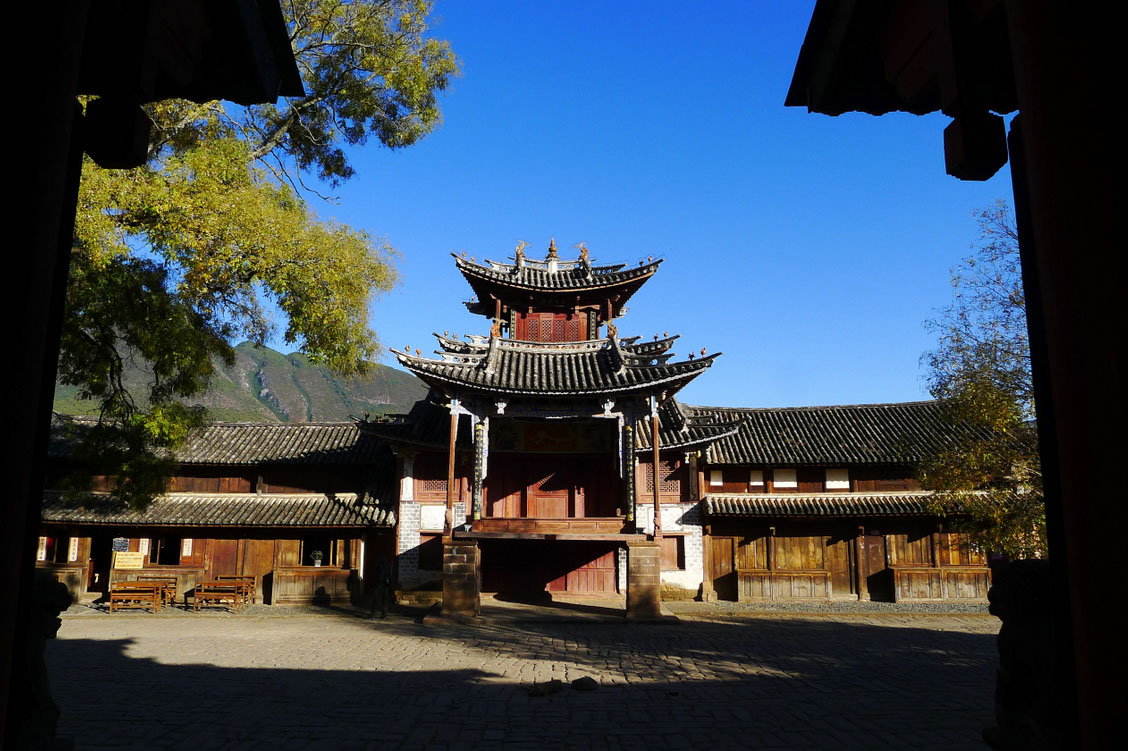
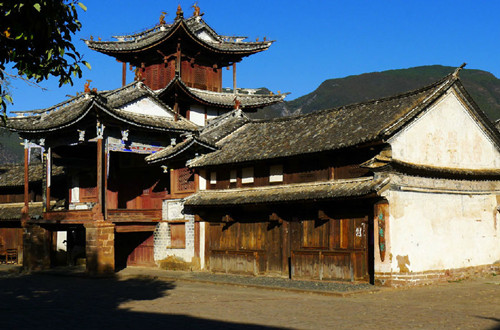
Shaxi Old Town
Main Attractions in Shaxi Old Town
▪ Square Street
In the same way as Lijiang Ancient City and Shuhe Ancient Town, Shaxi also has its Square Street, which is its center. Shaxi's Square Street is a plaza covered with red sand bricks, with two centuries-old Chinese scholar trees standing in the center. This street is a fully functioning millennium-old ancient bazaar, with a collection of temples, an ancient stage, shops, a caravansary, a wide street surface covered with red sand stone slabs, centuries-old trees, ancient alleyways, and ancient village gates.
One alleyway leads to the southern village gate which joins salt wells that lie to the south and west of Shaxi. In this alleyway, there are several inns. Another alleyway passes in front of the caravansary, leading to the eastern village gate. This is a gate to the Dali area, and the north one is to Tibet. Outside this gate, the Heihui River flows away.
The third alleyway is called Sideng Street, which is also the gateway to Shaxi. Vehicles running in and out of Shaxi are all parked at the entrance of this street, where there is a drugstore called Longevity Hall. In the past, there was a fair on Sideng Street every three days. It was very bustling. Caravans from everywhere passed through the alleyways to be put up at an inn on the afternoon of the day before, one after another.
▪ Xingjiao Temple (兴教寺)
Xingjiao Temple was built in Ming Dynasty with a history of 600 years, which is the most typical and representative Buddhist Azhali Temple in largest scale. The fresco preserved in the temple is artistic treasure of ancient Bai people in southwest China. It not only absorbed the painting style in central plains but also has strong local ethnic features. Walking inside the Xinjiao Temple, travelers must take their breath away in astonishment for the amazing architectural art in Ming Dynasty.
Xinjiao Temple is 18 meters from north to south, 14.5 meters from west to east and 19 meters in height. Experiencing several earthquakes during 600 years, it still stand majestically without deformation.
▪ Yujin Bridge(玉津桥)
The meandering Heihui River runs through Shaxi from north to south in the east. There is a crescent-shaped ancient bridge, Yujin Bridge, across the river, which is set off by distant towering green mountains. Yujin River was built in the Kangxi Period of the Qing Dynasty. After several centuries of collapse and destruction due to war, it was rebuilt in 1931. It has a height of 6 meters (12 meters clearance height), 35.4 meters length, 5 meters width, and fences made of stone slabs.
This ancient bridge is the only way for Bai people living in Shaxi to go to work in the fields and to do business. Stone slabs on its body have become shiny with green light but are also potholed due to the press and tread of carriages, horses and people. It is a witness and carrier of Shaxi's long history, greeting and sending off several generations of Shaxi ancestors. If you stand on the bridge looking back at Shaxi Ancient Town, you can see that there is a landscape painting under those mountains.
▪ Ancient Stage
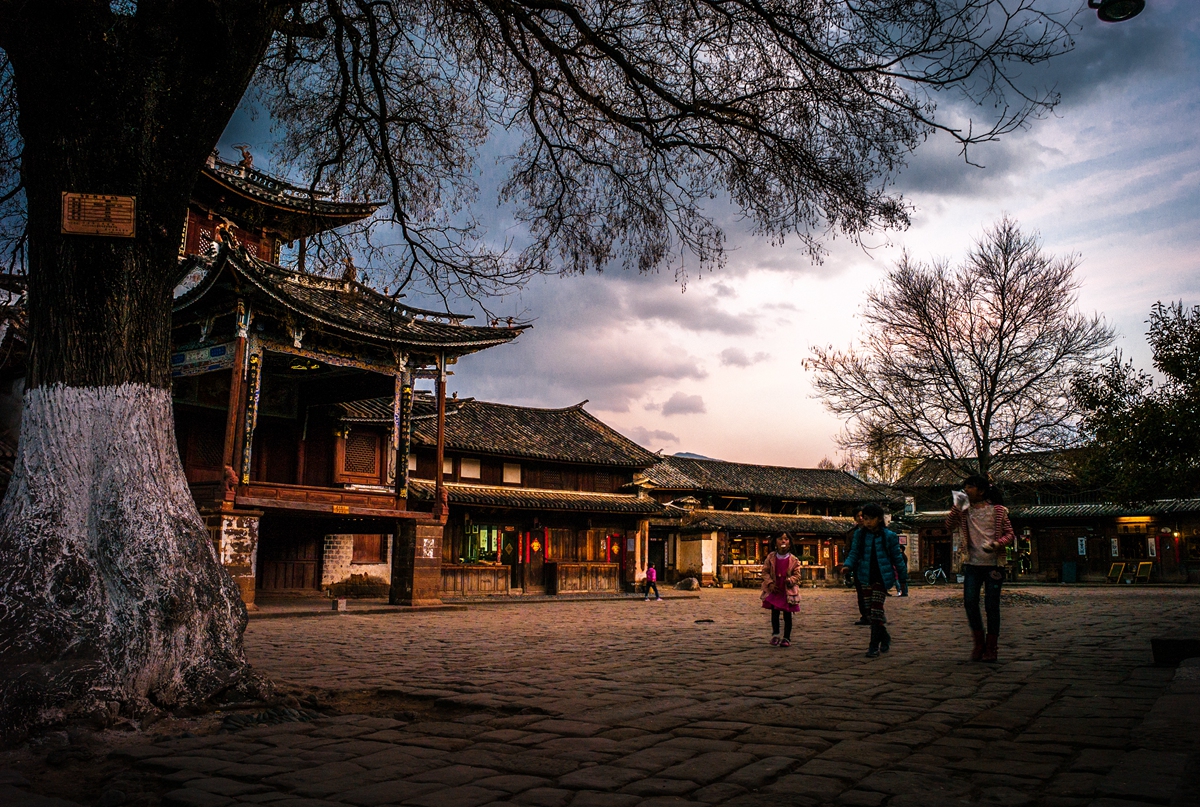
Ancient Stage in Shaxi Old Town
The ancient stage is the soul of Shaxi. Everyone that comes to Shaxi for the first time will marvel at its unique architectural structure and exquisite craftsmanship. It is the most distinctive building on Square Street.This stage was built in the Qing Dynasty. It is a three-story Kuixin pavilion with a stage. The front is the stage, and the back is the pavilion. It's a special structure with cornices and 14 flying eave corners. The stage is situated due east of Square Street, directly facing Xingjiao Temple to the west. The distance between them is less than 100 meters.
By spending 10 RMB, you can ascend the ancient stage. Along the steep wooden stairs, you can see the exhibition of cultural relics unearthed in Jianchuan on the second story and see the Quixin loft on the third story.
▪ Shaxi Old Town & Tea Horse Road
Shaxi once played an important role as a bustling trade station on the Tea and Horse Caravan Roadan important branch of the Silk Road. Just over one thousand years ago, this ancient trade route connected Tibet with Eastern China. In exchange for teas from Yunnan, Tibetans traded their famous breed of horse to Song Dynasty officials in eastern China, who were busy defending their territory from invaders from the north. Thus the Tea and Horse Caravan was born. Shaxi became the main trade station along this route.
Though today Tibet and China don’t trade along this route, Shaxi still has that border-town feel. Old cobble-stoned alleyways still look like they did a thousand years ago. And different minorities, including the Yi and Bai, still clash every Friday during the Sideng Market when mountain villagers come down from the hills to trade their goods. The World Monuments Fund has listed Shaxi as one of the 100 most endangered sites in the world; therefore, Shaxi has recently undergone massive efforts to preserve ancient architecture and culture.
Every year hundreds of thousands of Chinese and foreign travelers pass through Yunnan's popular tourist towns including Lijiang, Dali and Jinghong. In addition to these destinations, Yunnan is full of emerging areas that also deserve a visit such as Shaxi.
Nearby Attraction of Shaxi Old Town
Located in the 25 kilometers southwest of Jianchuan County, Shibao Mountain is well known not only for its breathtaking landscape, but also for its marvelous grottoes.
‣‣‣ Tours Including Shaxi Old Town
• 1 Day Shaxi Old Town and Shibaoshan Mountain Tour
• 2 Days Shaxi Old Town and Shibaoshan Mountain Tour
• 5 Days International School Students Educational Training Tour in Shaxi Old Town
Admission Fee:¥0
Attraction
Transportation:The trip from Dali to Shaxi takes about three-and-a-half hours via the bus to Jianchuan. As there are no large buses to Shaxi itself, the final leg is traveled via minibuses, which wait at the intersection of the roads to Jianchuan and Shaxi.
Attraction Travel Tips:
Sideng Friday Market
The Sideng Friday market in Shaxi is one of Yunnan's finest. On this day, minority peoples of the Yi and Bai come down from their mountain villages dressed in their finest attire. The market serves as both a meeting place for friends and family as well as a place to trade for goods hard to come by in the mountains. The animal market is one of the most interesting features. Pigs, cows, goats, sheep, ducks, and chickens are traded openly in a large field adjacent to the main road.
You will only receive emails that you permitted upon submission and your email address will never be shared with any third parties without your express permission.
